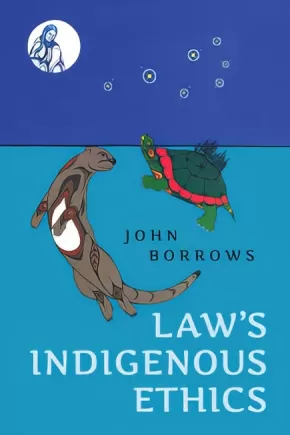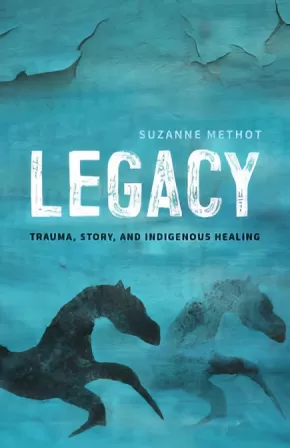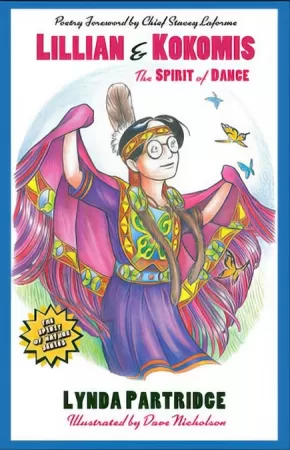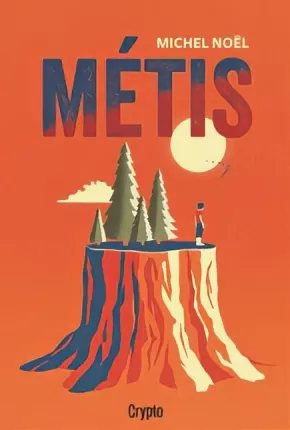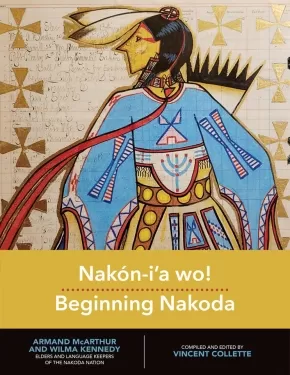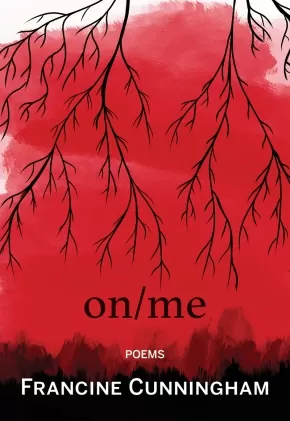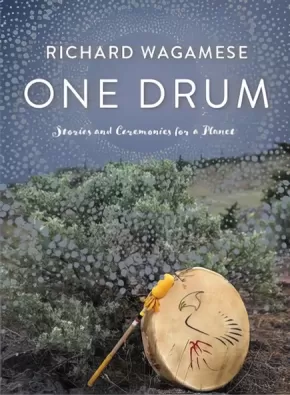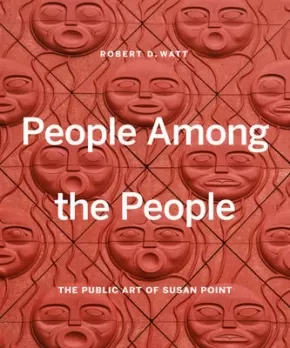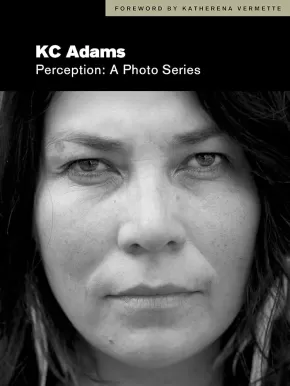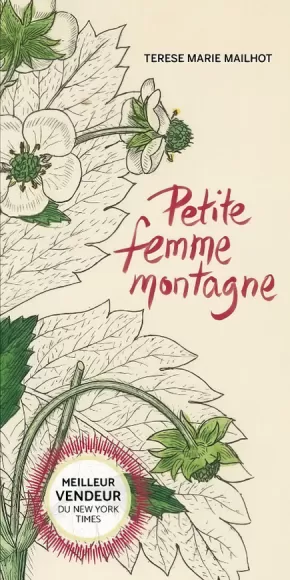
Indigenous Peoples
691
-
705
of
1080 Results;
Sort By
Go To
of 72
Kamloopa: An Indigenous Matriarch Story
$16.95
Format:
Paperback
Text Content Territories:
Indigenous Canadian; First Nations; Salish; Interior Salish; Syilx (Okanagan);
ISBN / Barcode: 9781772012422
Synopsis:
Synopsis:
TIME: All.
SPACE: The Multiverse.
Come along for the ride to Kamloopa, the largest Powwow on the West Coast. This high-energy Indigenous matriarchal story follows two urban Indigenous sisters and a lawless Trickster who face our postcolonial world head-on as they come to terms with what it means to honour who they are and where they come from. But how to go about discovering yourself when Christopher Columbus allegedly already did that? Bear witness to the courage of these women as they turn to their Ancestors for help in reclaiming their power in this ultimate transformation story.
In developing matriarchal relationships and shared Indigenous values, Kamloopa explores the fearless love and passion of two Indigenous women reconnecting with their homelands, Ancestors, and stories. Kim Senklip Harvey’s play is a boundary-blurring adventure that will remind you to always dance like the Ancestors are watching.
Kamloopa: An Indigenous Matriarch Story is the work of Kim Senklip Harvey, a proud Indigenous woman from the Syilx, Tsilhqot’in, Ktunaxa, and Dakelh First Nations, listed for the Gina Wilkinson Prize for her work as an emerging director and widely considered to be one of this land’s most original voices among the next generation of Indigenous artists.
Awards
- 2020 Governor General's Award for English-language drama
Reviews
"A thoughtful, funny, and compelling exploration of the complexities of Indigenous community making and knowledge reclamation."—BC Studies
“Kamloopa is a hilarious and courageous transformation story. Kim Senklip Harvey makes a generous invitation for all of us to bear witness to the joy, resilience, and brilliance of Indigenous women.”—Christine Quintana
“This story about three women who are actively trying to decolonize themselves (whether they realize it or not) resonated deeply … Uplifting the voices of Indigenous women, Two-Spirit, and non-binary folks is incredibly important to our resistance and our communities. Kamloopa is one of those stories providing that platform.”—Yolanda Bonnell
“Kamloopa brought me an empowerment of self and a reclaiming of knowledge. It brought me sisterhood and ties that have shaped the way I create and approach life. As an Indigenous woman I felt seen, heard, and valid, something we should all experience. Miigwech.”—Samantha Brown
Educator Information
Recommended in the Canadian Indigenous Books for Schools 2020/2021 resource list for grades 8 to 12 for Acting, Drama, Theatre, and English Language Arts.
The Syilx language, Nsyilxcǝn, is used throughout this play. Also included is the resource "Fire Zine! A Kamloopa Study Buddy" by Kimi Clark. It discusses Indigenous artistic ceremony Protocol, Indigenous Theatre terms, and guides users in facilitating a Talking Circle.
Additional Information
|
Lac Pelletier: My Métis Home
$20.00
Text Content Territories:
Indigenous Canadian; Métis;
ISBN / Barcode: 978-1-926795-91-1
Synopsis:
Synopsis:
Gabriel Dumont Institute Press is honoured to publish Cecile Blanke’s Lac Pelletier: My Métis Home. A prominent Métis Elder living in Swift Current, Saskatchewan, but with deep roots in nearby Lac Pelletier, Cecile has been a tireless presence on the Métis and larger cultural scene in southwest Saskatchewan for many years. The history of the southwest Saskatchewan Métis is not widely known, and this book contributes significantly to our knowledge of this community. With her vivid memories of Lac Pelletier’s local families and traditions, we are left with an enduring portrait of a caring Métis community which maintained close family ties and lived in harmony with Lac Pelletier’s flora and fauna. Cecile also chronicles the racism that the local Métis often faced and discussed how colonization made her and others question their Métis identity. With time and perspective, she overcame this self-hatred and became proud of her Métis heritage, becoming its biggest promoter in her region of Saskatchewan.
Educator Information
Recommended by Gabriel Dumont Institute for these grade levels: Secondary/Post-Secondary/Adult
Law's Indigenous Ethics
$47.95
Format:
Paperback
Text Content Territories:
Indigenous Canadian; First Nations; Anishinaabeg;
Grade Levels: 12; University/College;
ISBN / Barcode: 9781487523558
Synopsis:
Synopsis:
Law’s Indigenous Ethics examines the revitalization of Indigenous peoples’ relationship to their own laws and, in so doing, attempts to enrich Canadian constitutional law more generally. Organized around the seven Anishinaabe grandmother and grandfather teachings of love, truth, bravery, humility, wisdom, honesty, and respect, this book explores ethics in relation to Aboriginal issues including title, treaties, legal education, and residential schools.
With characteristic depth and sensitivity, John Borrows brings insights drawn from philosophy, law, and political science to bear on some of the most pressing issues that arise in contemplating the interaction between Canadian state law and Indigenous legal traditions. In the course of a wide-ranging but accessible inquiry, he discusses such topics as Indigenous agency, self-determination, legal pluralism, and power. In its use of Anishinaabe stories and methodologies drawn from the emerging field of Indigenous studies, Law’s Indigenous Ethics makes a significant contribution to scholarly debate and is an essential resource for readers seeking a deeper understanding of Indigenous rights, societies, and cultures.
Reviews
"Law’s Indigenous Ethics addresses very controversial topics in Canada, not just in Indigenous legal studies, but far beyond that. John Borrows employs story work methodology, along with thorough legal research, ensuring that his work is truly leading edge. Law’s Indigenous Ethics will further advance Indigenous studies in Canada and beyond. Borrows’s work moves beyond the binary, divisive, and linear ideologies dominating the Indigenous intellectual landscape in Canada. He provides nuance, complicates dominate narratives, and gives the reader much food for thought and, more importantly, asks the reader to think, reflect, and embrace the principles embedded in the seven grandmother and grandfather teachings as a whole." -Deborah McGregor, Osgoode Hall Law School, Canada Research Chair in Indigenous Environmental Justice, York University
"Law’s Indigenous Ethics is extremely novel, important, and has the potential for great influence. Demonstrating tremendous expertise and fluency with its subjects, John Borrows’s arguments are sound and thoughtful, providing a number of important insights that lead me to adjust the way I think about issues that are very familiar to me." -Bethany Berger, Wallace Stevens Professor of Law, University of Connecticut
Additional Information
400 pages | 6.00" x 9.00"
Legacy: Trauma, Story, and Indigenous Healing
$24.95
Format:
Paperback
Text Content Territories:
Indigenous Canadian;
Grade Levels: 12; University/College;
ISBN / Barcode: 9781770414259
Synopsis:
Synopsis:
Exploring intergenerational trauma in Indigenous communities — and strategies for healing — with provocative prose and an empathetic approach
Indigenous peoples have shockingly higher rates of addiction, depression, diabetes, and other chronic health conditions than other North Americans. According to the Aboriginal Healing Foundation, these are a result of intergenerational trauma: the unresolved terror, anger, fear, and grief created in Indigenous communities by the painful experiences of colonialism, passed down from generation to generation.
How are we to turn this desperate tide? With passionate argumentation and chillingly clear prose, author and educator Suzanne Methot uses her own and others’ stories to trace the roots of colonial trauma and the mechanisms by which trauma has become intergenerational, and she explores the Indigenous ways of knowing that can lead us toward change.
Reviews
“This book is accessible, relatable, and full of storytelling about real people. It deeply resonates with me as a traditional counsellor, educator, and Indigenous person. Suzanne Methot, a brave Nehiyaw writer and community helper, takes up the challenges of logically explaining a child’s traumatized brain and body and how these impacts continue into adulthood. Methot also explores Indigenous health-care models, proving that Indigenous values provide solutions. This book uncovers the critical need for legislation that moves from creating ‘a renewed relationship’ with Indigenous peoples to creating real structural change.” — Dr. Cyndy Baskin, Mi’kmaq Nation, Associate Professor, School of Social Work, Ryerson University
Educator Information
A version of this work for young adults is available here: Killing the Wittigo: Indigenous Culture-Based Approaches to Waking Up, Taking Action, and Doing the Work of Healing
Additional Information
368 pages | 5.50" x 8.50"
Lillian and Kokomis: The Spirit of Dance
$17.95
Artists:
Format:
Paperback
Text Content Territories:
Indigenous Canadian;
ISBN / Barcode: 9781988824277
Synopsis:
Synopsis:
Lillian is a girl of mixed Indigenous and white ancestry who has been shuffled from foster home to foster home as long as she can remember. At school, she doesn’t feel like she fits in with the white kids and doesn’t fit in with the Indigenous kids either. She finds happiness and a sense of belonging from a surprising spirit that returns her to traditional ways.
Reviews
“I love this book. I think everyone, not just children should read it. With gentle empathy and joyous hope, Lynda Partridge paints the heartbreaking realities lived by far too many young people, while simultaneously generating optimism. She describes what is possible when we provide opportunities for generations to heal and lead us forward. The possibilities are both tremendous and endless.” - Senator Kim Pate, Senate of Canada
“Lillian has much to teach children and adults alike on the experience of utter vulnerability, resistance, and the art of the wise-child survival.” — Pamela Johnson, PhD Psychology
“A wonderful story of courage, inner strength and resilience as told through the eyes and mind of a child. Through this story of early adversity rises a person of character and wisdom who now shares her extraordinary understanding of finding a place in this world for the benefit of others”. - Leo Massi, MSW, RSW. Executive Director, H-N REACH.
“This story is from the spirit and is a message for all of our First Nations relatives that it is now time to rise up and take this responsibility back to being natural helpers, and to nurture our children who are struggling.”— Robin Decontie, MSW, Algonquin Anishinabekwe Director, Kitigan Zibi Health and Social Services
Educator & Series Information
This book is part of the Indigenous Spirit of Nature Series. It is also the first book in the Lillian Mystery series.
Foreword Poems by Chief R. Stacey Laforme.
Recommended ages: 7 to 12.
Recommended in the Canadian Indigenous Books for Schools 2019-2020 resource list as being useful for grades 6-8 for English Language Arts.
Additional Information
90 pages | 8.50" x 5.50" | 18 b&w illustrations
Métis
$19.95
Text Content Territories:
Indigenous Canadian; First Nations; Anishinaabeg; Algonquin; Métis;
ISBN / Barcode: 9782897702328
Synopsis:
Synopsis:
De courts tableaux teintés d'humour et de poésie tissent ce roman autobiographique dans lequel un adolescent porte un regard lucide et émouvant sur l'histoire peu commune de sa famille métisse, au milieu du siècle dernier. Avec justesse et authenticité, il témoigne de la vie en territoire algonquin, à l'époque des camps de bûcherons, et dresse un portrait saisissant de ceux qu'il côtoie quotidiennement. Un récit poignant qui met en lumière nos racines québécoises et autochtones.
Educator Information
Recommended as 14+ by publisher.
Additional Information
256 Pages
Nakón-i'a wo! Beginning Nakoda
$34.95
Editors:
Format:
Coil Bound
Text Content Territories:
Indigenous Canadian; First Nations; Assiniboine (Nakoda Oyadebi);
ISBN / Barcode: 9780889776623
Synopsis:
Synopsis:
Nakón-i'a wo! Beginning Nakoda is a language resource designed to help revitalize and document Nakoda, now spoken in Manitoba and Saskatchewan.
Written for beginning learners of Nakoda (also known as Assiniboine), this workbook, arranged thematically, provides a Nakoda/English lexicon, a vocabulary, a table of kinship terms, a glossary of linguistic terminology, and exercises to do after each lesson.
This book was made possible with the assistance of Elders and Language Keepers of the Nakoda Nation: Armand McArthur and Wilma Kennedy, Main Consultants; with additional contributions by Pete Bigstone, Leona Kroscamp, Freda O'Watch, and Ken Armstrong.
Educator & Series Information
Recommended for Grades 7+
Part of the Indigenous Languages for Beginners series.
Additional Information
304 pages | 8.50" x 11.00" | Black and white illustrations throughout
Nowhere to Hide
$12.95
Format:
Paperback
Text Content Territories:
Indigenous American; Native American; Anishinaabeg; Ojibwe (Chippewa); Minnesota Chippewa Tribe; White Earth Band of Ojibwe;
ISBN / Barcode: 9781939053213
Synopsis:
Synopsis:
Autumn Dawn is sick of being bullied at school. It's not her fault that she doesn't learn as fast as the other kids or that she speaks a little differently. Her home life isn't much better. Ever since Autumn's dad left, her mother can't cope, so Autumn has to care for her baby brother and do all the housework. Her mother hasn't even noticed the problems her daughter is dealing with.
When Autumn's Ojibwa aunt comes to visit, she recognizes Autumn's dyslexia and speech problems. Can Aunt Jessie build a bridge between mother and daughter and give Autumn the confidence she needs to move past her challenges?
Educator & Series Information
Recommended Ages: 12 to 16
Fry Reading Level: 4
This book is part of the PathFinders series. The PathFinders series of Hi-Lo (high interest, low readability) novels offers the following features:
• Indigenous teen protagonists
• Age-appropriate plots
• 2.5 – 4.5 Reading Level
• Contemporary and historical fiction
• Indigenous authors
The PathFinders series is from an American publisher. Therefore, Indigenous terminology in the PathFinders books is not the same as Canadian Indigenous terminology. This prompts a useful teaching moment for educators in discussing appropriate terminology use in Canada.
This book is part of the Autumn Dawn Series, a subseries of the PathFinders series.
Additional Information
120 pages | 4.50" x 7.00"
On/Me
$18.00
Format:
Paperback
Text Content Territories:
Indigenous Canadian; First Nations; Cree (Nehiyawak); Plains Cree; Saddle Lake Cree Nation ;
ISBN / Barcode: 9781773860169
Synopsis:
Synopsis:
Francine Cunningham lives with constant reminders that she doesn't fit the desired expectations of the world: she is a white-passing, city-raised Indigenous woman with mental illness who has lost her mother. In her debut poetry collection ON/ME, Cunningham explores, with keen attention and poise, what it means to be forced to exist within the margins. Cunningham does not hold back: she holds a lens to residential schools, intergenerational trauma, Indigenous Peoples forcibly sent to sanatoriums, systemic racism and mental illness, and translates these topics into lived experiences that are nuanced, emotional, funny and heartbreaking all at once. ON/ME is an encyclopedia of Cunningham, who shares some of her most sacred moments with the hope to spark a conversation that needs to be had.
Educator Information
Recommended in the Canadian Indigenous Books for Schools 2020/2021 resource list for grades 8 to 12 in the areas of English Language Arts and Social Studies.
Caution: mature subject matter.
Additional Information
96 pages | 8.00" x 5.50"
One Drum: Stories and Ceremonies for a Planet
$21.95
Format:
Paperback
Text Content Territories:
Indigenous Canadian; First Nations; Anishinaabeg; Ojibway; Wabaseemoong First Nation;
Grade Levels: 12; University/College;
ISBN / Barcode: 9781771622295
Synopsis:
Synopsis:
“The most profound truth in the universe is this: that we are all one drum and we need each other.” —Richard Wagamese, One Drum
A posthumous volume of stories and ceremonies -- and a fitting tribute to Richard Wagamese's spiritual and literacy legacy.
Fans of Richard Wagamese’s writing will be heartened by the news that the bestselling author left behind a manuscript he’d been working on until shortly before his death in 2017. One Drum welcomes readers to unite in ceremony to heal themselves and bring harmony to their lives and communities.
In One Drum, Wagamese wrote, “I am not a shaman. Nor am I an elder, a pipe carrier, or a celebrated traditionalist. I am merely one who has trudged the same path many of this human family has—the path of the seeker, called forward by a yearning I have not always understood.”
One Drum draws from the foundational teachings of Ojibway tradition, the Grandfather Teachings. Focusing specifically on the lessons of humility, respect and courage, the volume contains simple ceremonies that anyone anywhere can do, alone or in a group, to foster harmony and connection. Wagamese believed that there is a shaman in each of us, and we are all teachers and in the world of the spirit there is no right way or wrong way.
Writing of neglect, abuse and loss of identity, Wagamese recalled living on the street, going to jail, drinking too much, feeling rootless and afraid, and then the feeling of hope he gained from connecting with the spiritual ways of his people. He expressed the belief that ceremony has the power to unify and to heal for people of all backgrounds. “When that happens,” he wrote, “we truly become one song and one drum beating together in a common purpose—and we are on the path to being healed.”
Additional Information
160 pages | 5.50" x 8.00"
Our History Is the Future: Standing Rock Versus the Dakota Access Pipeline, and the Long Tradition of Indigenous Resistance
$35.95
Format:
Hardcover
Text Content Territories:
Indigenous American; Native American; Sioux; Dakota; Lakota;
Grade Levels: 12; University/College;
ISBN / Barcode: 9781786636720
Synopsis:
Synopsis:
How two centuries of Indigenous resistance created the movement proclaiming “Water is life”.
In 2016, a small protest encampment at the Standing Rock Reservation in North Dakota, initially established to block construction of the Dakota Access oil pipeline, grew to be the largest Indigenous protest movement in the twenty-first century. Water Protectors knew this battle for native sovereignty had already been fought many times before, and that, even after the encampment was gone, their anticolonial struggle would continue. In Our History Is the Future, Nick Estes traces traditions of Indigenous resistance that led to the #NoDAPL movement. Our History Is the Future is at once a work of history, a manifesto, and an intergenerational story of resistance.
Reviews
“Embedded in the centuries-long struggle for Indigenous liberation resides our best hope for a safe and just future for everyone on this planet. Few events embody that truth as clearly as the resistance at Standing Rock, and the many deep currents that converged there. In this powerful blend of personal and historical narrative, Nick Estes skillfully weaves together transformative stories of resistance from these front lines, never losing sight of their enormous stakes. A major contribution.”—Naomi Klein, author of This Changes Everything
“In Our History Is the Future historian Nick Estes tells a spellbinding story of the 10 month Indigenous resistance at Standing Rock in 2016, animating the lives and characters of the leaders and organizers, emphasizing the powerful leadership of the women. Alone this would be a brilliant analysis of one of the most significant social movements of this century. But embedded in the story and inseparable from it is the centuries-long history of the Oceti Sakowin’ resistance to United States’ genocidal wars and colonial institutions. And woven into these entwined stories of Indigenous resistance is the true history of the United States as a colonialist state and a global history of European colonialism. This book is a jewel—history and analysis that reads like the best poetry—certain to be a classic work as well as a study guide for continued and accelerated resistance.”—Roxanne Dunbar Ortiz, author of An Indigenous Peoples’ History of the United States
“When state violence against peaceful protest at Standing Rock became part of the national consciousness, many noticed Native people for the first time—again. Our History Is the Future is necessary reading, documenting how Native resistance is met with settler erasure: an outcome shaped by land, resources, and the juggernaut of capitalism. Estes has written a powerful history of Seven Fires resolve that demonstrates how Standing Rock is the outcome of history and the beginning of the future.”—Louise Erdrich, author of the National Book Award winner The Round House
“A touching and necessary manifesto and history featuring firsthand accounts of the recent Indigenous uprising against powerful oil companies … With an urgent voice, Estes reminds us that the greed of private corporations must never be allowed to endanger the health of the majority. An important read about Indigenous protesters fighting to protect their ancestral land and uphold their historic values of clean land and water for all humans.” —Kirkus
“Our History Is the Future is a game-changer. In addition to providing a thorough and cogent history of the long tradition of Indigenous resistance, it is also a personal memoir and homage to the Oceti Sakowin; an entreaty to all their relations that demands the ‘emancipation of the earth.’ Estes continues in the legacy of his ancestors, from Black Elk to Vine Deloria, he turns Indigenous history right-side up as a story of self-defense against settler invasion. In so doing, he is careful and judicious in his telling, working seamlessly across eras, movements, and scholarly literatures, to forge a collective vision for liberation that takes prophecy and revolutionary theory seriously. The book will be an instant classic and go-to text for students and educators working to understand the ‘structure’ undergirding the ‘event’ of the Dakota Access Pipeline. This is what history as Ghost Dance looks like.”—Sandy Grande, author of Red Pedagogy: Native American Social and Political Thought
“Nick Estes is a forceful writer whose work reflects the defiant spirit of the #NoDAPL movement. Our History Is the Future braids together strands of history, theory, manifesto and memoir into a unique and compelling whole that will provoke activists, scholars and readers alike to think deeper, consider broader possibilities and mobilize for action on stolen land.”—Julian Brave Noisecat, 350.org
Additional Information
320 pages | 5.50" x 8.25"
People Among the People: The Public Art of Susan Point
$60.00
Artists:
Format:
Hardcover
Text Content Territories:
Indigenous Canadian; First Nations; Salish; Coast Salish; Musqueam;
ISBN / Barcode: 9781773270425
Synopsis:
Synopsis:
“I feel that it is important to re-establish our Salish footprint upon our lands, to create a visual expression of the link between the past and present that is both accessible and people-friendly. . . . I create unique, ‘original’ artwork that honours both my people and the diverse group of peoples from around the world who have come to live upon our lands on the Northwest Coast. My hope is that my art leaves a lasting impression on visitors, locals, and the surrounding communities.” — Susan Point
This beautifully designed book is the first to explore Susan Point's publicly commissioned artworks from coast to coast.
Susan Point’s unique artworks have been credited with almost single-handedly reviving the traditional Coast Salish art style. Once nearly lost to the effects of colonization, the crescents, wedges, and human and animal forms characteristic of the art of First Nations peoples living around the Salish Sea can now be seen around the world, reinvigorated with modern materials and techniques, in her serigraphs and public art installations—and in the works of a new generation of artists that she’s inspired.
People Among the People beautifully displays the breadth of Susan Point’s public art, from cast-iron manhole covers to massive carved cedar spindle whorls, installed in locations from Vancouver to Zurich. Through extensive interviews and access to her archives, Robert D. Watt tells the story of each piece, whether it’s the evolution from sketch to carving to casting, or the significance of the images and symbolism, which is informed by surviving traditional Salish works Point has studied and the Oral Traditions of her Musqueam family and elders.
In her long quest to re-establish a Coast Salish footprint in Southwest British Columbia and the Pacific Northwest of the US, Point has received many honours, including the Order of Canada and the Audain Lifetime Achievement Award. This gorgeous and illuminating book makes it clear they are all richly deserved.
Additional Information
208 pages | 10.17" x 12.39" | Colour photographs throughout | Hardcover
Perception: A Photo Series
$34.00
Artists:
Format:
Hardcover
Text Content Territories:
Indigenous Canadian; First Nations; Inuit; Métis;
ISBN / Barcode: 9781553797869
Synopsis:
Synopsis:
Social action art in book form, Perception: A Photo Series encourages readers to look and then look again.
Tired of reading negative and disparaging remarks directed at Indigenous people of Winnipeg in the press and social media, artist KC Adams created a photo series that presented another perspective. Called “Perception Photo Series,” it confronted common stereotypes of First Nation, Inuit and Métis people to illustrate a more contemporary truthful story.
First appearing on billboards, in storefronts, in bus shelters, and projected onto Winnipeg’s downtown buildings, Adam’s stunning photographs now appear in her new book, Perception: A Photo Series. Meant to challenge the culture of apathy and willful ignorance about Indigenous issues, Adams hopes to unite readers in the fight against prejudice of all kinds.
Reviews
"Indeed, the potential lasting impact of this collection can’t be underestimated; this is socially engaged art at its best." — Kirkus Reviews, March 2019
"KC Adams' Perception series challenges us to bridge thought and reality; emerging on the other side better having challenged ourselves to see Indigenous peoples for what they really are. We are grandparents, parents, children - and everything in between. As Adams shows through this incredible exhibition of faces and feelings, we are beautiful, whole, and complex peoples irreducible to stereotypes and slander." — Romeo Saganash (Cree, father, activist, and dreamer)
"KC Adams's Perception series absolutely captured the most devastating perceptions from the colonial mind, and the accompanying lack of knowledge about the truth of Canada's historical relationship to Indigenous Peoples. Succinctly and beautifully, KC transformed that narrative in this series. It is a prolific piece which will always be a source of inspiration for truth and reconciliation. It is unforgettable. Kichi miigwetch KC Adams!." — Tina Keeper, March 2019
"We hear the saying, “A picture can say a thousand words” quite often, but sometimes we don’t take the time to actually look at what we are seeing and what it is saying. Sometimes photographs are taken for fun, with no real meaning behind them. But there are times when a photograph is taken for a purpose, taken to deliver a message. KC Adams, with Perception, is doing just that. She is not only delivering a message, she is also making a statement in order to break down the racial prejudices and stereotypes towards the indigenous community in Canada.... From looking at the first picture that shows their reaction to what people think of them to looking at their second picture that shows their look of pure happiness coupled with their name, their tribes, and the words they would use to describe themselves is what is causing people to think twice, think differently, and spark conversation." — Leslie Trotter, NetGalley, March 2019
"I admire what KC Adams did when she kept hearing disparaging remarks and slurs against the Native peoples of Canada. As an indigenous person herself, she too, had been subjected to mistreatment and prejudice just be being someone who looks different. She was determined to find a way to get people's perceptions to change. The Native/indigenous people and their cultures were here to stay and non-Native people had to come to terms with and accept that. Adams choose to use her skill as a photographer as a catalyst to address the racism and prejudice head on.... She took a series of two photographs of the same person; one as she said a racist remark, the other as she said something positive about the person. She then put up these pictures as posters around municipal areas. The first picture was headlined with the slur said while filming it, the bottom said "Think again". The second picture (taken when she invoked a positive response in them) told who they were and some things about them. This photography series (now captured in her book Perceptions) helped people recognize their own reactions to Native peoples and realize that they were unfair and untrue.... I love when art is not only creative, but an agent for social change! Kudos, Ms. Adams! Well done!" — Kathy Fuchs, NetGalley, February 2019
"Perception is an impressive collection...an inside look into a living legend’s photography practice (I say this in no uncertain terms) and, more importantly, as Adams intended, a reminder to look past the hurt in search of a love that can bring us all home." — Lindsay Nixon, Editor-at-Large Canadian Art, author nîtisânak, Metonymy Press, March 2019
"This is an amazing portrayal of the indigenous community. The emotions displayed by each individual are clearly defined. I highly recommend this resource be placed in all libraries and used to dispel racism and discriminatory ideas." — Shelley Stefanowich, NetGalley, April 2019
Educator & Series Information
For Grades 9-12 / Young Adults
Foreword by Katherena Vermette; Critical essay by Cathy Mattes
Caution: Mature subject matter/language in some instances as this book is dealing with stereotypes and prejudice (radicalized language and derogatory terminology).
Recommended in the Canadian Indigenous Books for Schools 2019-2020 resource list for grades 10 to 12 for Art Education, Social Studies, Social Justice, and English Language Arts.
This book is part of The Debwe Series, a collection of exceptional Indigenous writings from across Canada.
Additional Information
120 pages | 6.75" x 9.00" | Hardcover | Foreward from Katherena Vermette
Performing Turtle Island: Indigenous Theatre on the World Stage
$29.95
Editors:
Format:
Paperback
Text Content Territories:
Indigenous Canadian;
Grade Levels: University/College;
ISBN / Barcode: 9780889776562
Synopsis:
Synopsis:
Following the Final Report on Truth and Reconciliation, Performing Turtle Island investigates theatre as a tool for community engagement, education, and resistance.
Comprised of multidisciplinary and diverse perspectives, Performing Turtle Island considers theatre as a tool for community engagement, education, and resistance, and examines how communities in turn influence the construction of Indigenous identities through theatre.
Contributors:
Megan Davies (York University)
Spy Dénommé-Welch (Brock University)
Floyd Favel (Poundmaker First Nation)
Carol Greyeyes (University of Saskatchewan)
Michael Greyeyes (Muskeg Lake First Nation)
Kahente Horn-Miller (Carleton University)
Dione Joseph (Onehunga, New Zealand)
Catherine Magowan (Hamilton, ON)
Daniel David Moses (Queen's University)
Yvette Nolan (University of Saskatchewan)
Armand Ruffo (Sagamok Ojibway and Chapleau Cree Fox Lake First Nations, Queen's University)
Annie Smith (Grand Prairie Regional College)
Reviews
“Brilliantly introduces pedagogies that jump scale; a bundling project for future ancestors revealing knowledges for flight into kinstillatory relationships. ” —Karyn Recollet, co-author of In This Together: Blackness, Indigeneity, and Hip Hop
“An important resource for those who want to introduce or incorporate Indigenous artistic perspectives in their course or work. ” —Heather Davis-Fisch, author of Loss and Cultural Remains in Performance
“A very significant and welcome contribution to the growing body of work on Indigenous theatre and performance in the land now called Canada. ” —Ric Knowles, author of Performing the Intercultural City
Educator Information
Understanding Indigenous cultures as critical sources of knowledge and meaning, each essay addresses issues that remind us that the way to reconciliation between Canadians and Indigenous peoples is neither straightforward nor easily achieved. Comprised of multidisciplinary and diverse perspectives, Performing Turtle Island considers performance as both a means to self-empowerment and self-determination, and a way of placing Indigenous performance in dialogue with other nations, both on the lands of Turtle Island and on the world stage.
Additional Information
256 pages | 6.00" x 9.00" | 5 photos, 1 table
Petite Femme Montagne
$22.95
Format:
Paperback
Text Content Territories:
Indigenous Canadian; First Nations; Salish; Coast Salish; Sto:lo; Seabird Island;
Reading Level: N/A
ISBN / Barcode: 9782923896953
Synopsis:
Synopsis:
Petite femme montagne est un cri du coeur qui prend le lecteur à témoin et l'oblige à examiner sa propre vie. C'est livre vérité, un livre boussole qui explique comment survivre aux relations mère-fille, à la maternité, au désir, à la trahison, aux amours déçus, à la dépendance, à l'abus et à l'injustice. Terese Marie Mailhot illumine avec finesse son enfance dans une maison infestée de coccinelles sur la réserve de Seabird Island. Son père, un artiste qu'a rencontré sa mère alors qu'il était en prison est décédé dans une chambre de motel après une altercation avec un ami. Elle montre comment pour quelqu'un qui a vécu la faim, l'abus et les familles déchirées le simple confort de la vie domestique peut ressembler au paradis. Petite femme montagne est un livre nécessaire.
Educator Information
This book is available in English: Heart Berries: A Memoir
Additional Information
204 Pages
Sort By
Go To
of 72





